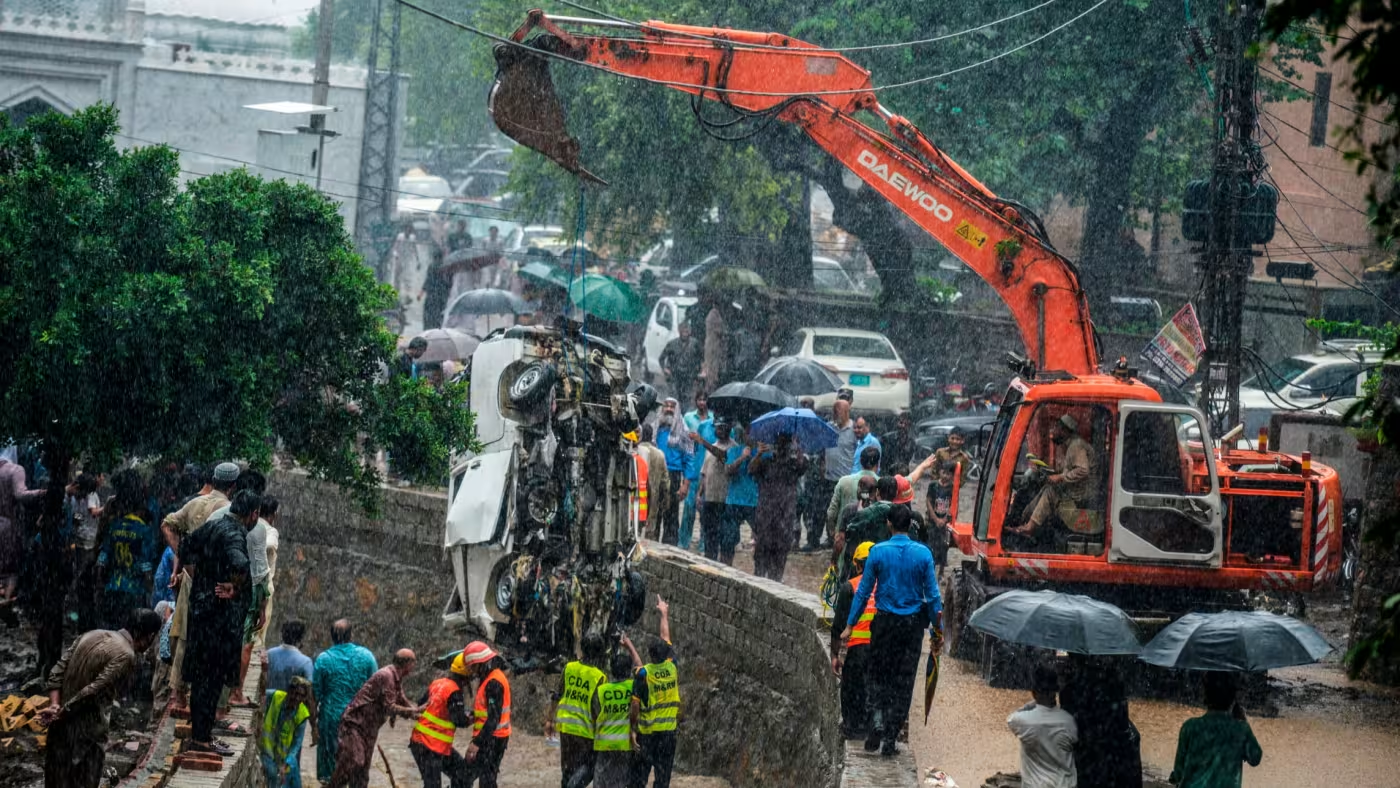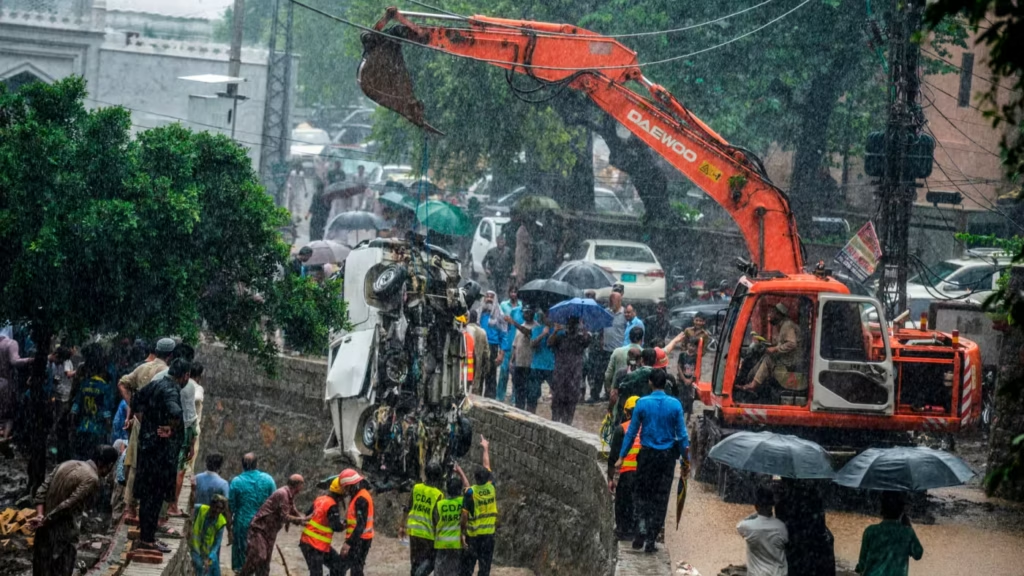Monsoon Fury: Why South Asia Is Watching the Floods So Closely?

Last week in late July 2025, South Asia was facing record-breaking destruction as monsoon rains lashed down incessantly. From Pakistan’s valleys and north-western India to central India, people are inundated, economy disrupted, and governments scrambling to react. Here is a closer examination of what is going on—and why it means so much for the whole region.

When the Rains Turn Deadly?
In Pakistan, a non-stop tandem of glacial lake outbursts, cloudbursts, and monsoon rains has caused devastating floods in Gilgit-Baltistan, Swat Valley, and elsewhere. So far, over 250 lives have been lost—with almost 85 children—over 600 injured as widespread destruction spread. Tourists, residents, and whole neighborhoods have been left stranded or displaced.
Meanwhile, parts of central and north-west India have also seen heavy monsoon rainfall. In April–June 2025, 120 deaths were recorded, highlighting how erratic weather patterns are impacting both sides of the subcontinent. Infrastructure has been washed out, homes destroyed, and communication lines disrupted.
Ripples Beyond the Rain
These are not isolated events—they’ve reached crisis proportions regionally. In Pakistan, more than 300 tourists were stuck in Gilgit-Baltistan when flooding destroyed access roads along the Karakoram Highway. Rescue efforts, including those of the Pakistani Army, have airlifted many out.
India’s Swat Valley and Gilgit-Baltistan floods reflect analogous stress on common rivers like the Indus. The disaster highlights a collective problem of coping with monsoon effects, glacier melting, and transboundary water governance.
The International Monetary Fund (IMF) has dispatched Pakistan $1.4 billion in climate resilience emergency support, underscoring the global gravity of the issue.
Are We Seeing the Signs of Climate Change?
Experts cite increasing world temperatures as the principal motive. June 2025 was 1.3 °C above pre‑industrial levels—getting close to the threshold of 1.5 °C set in the Paris Accord. A warmer atmosphere is capable of retaining more water, and when monsoons come, they come with a vengeance.
Compounding the problem are glacial lake outburst floods (GLOFs) within the Himalayas. While glaciers melt increasingly rapidly, lakes develop pressure—and when they rupture, they release instant waves of water downstream, carrying villages and roads along with them.
How Governments Are Responding?
Rescue operations are underway in full force in Pakistan. Helicopters scour river beds and mountain gorges for survivors while roads are cleared and bridges strengthened. Authorities caution that another bout of monsoon rain could make things even more worse before relief sets in.
In India, the authorities are working on evacuation, repair of damaged roads, and reconstruction of infrastructure. Relief work is being mobilised by local communities, and climate agencies are issuing frequent warnings regarding flood-prone locations.
Shared Waters, Shared Risks
The inundation in Pakistan and India is a strong reminder that the Indus river basin ties the two nations together in mutual ecological peril. The Indus Waters Treaty, a bulwark of regional collaboration, has been strained by India’s recent decision to suspend the agreement following the Pahalgam terrorist attack. Experts caution that failure to share data on river flows may make flood relief more difficult—and even more perilous.
Environmentalists call for increased cooperation: cooperative watershed management, joint early warning systems, and transboundary climate preparedness.
Why This Is Everyone’s Business?
These floods are not merely local disasters—they imperil:
- Lives and livelihoods, particularly of rural poor and hill dwellers
- Tourism-based economies, such as Gilgit-Baltistan, which is trekkers’ and seasonal tourists’ paradise
- Food security, since agricultural fields in floodplains can be out of use for months
- Climate diplomacy, as transboundary river basins such as the Indus require multilateral collaboration.
While temperatures continue to rise and monsoon trends become more intense, resilience and adaptive governance are now imperative.
What Needs to Change Going Forward?
1. Improved early-warning systems: Quick warnings can be a lifesaver if communities can evacuate in time.
2. Improved infrastructure planning: Bridges, roads, and buildings need to be constructed with flood risk in mind.
3. Climate diplomacy: International information sharing is crucial— particularly on hydrology and weather.
4. Community education: Village resilience programs enable villagers to plan and react in case of emergencies.
5. International climate support: Increased grant-based assistance (not loans) is required for rebuilding and adaptation.
As the monsoon season goes on, the floods rocking South Asia are a sobering wake-up call. The devastation is authentic—but so is the determination of humanity. People are rallying together, rescue missions are being mounted, and governments realize that to ignore these warnings would invite even greater sorrow in the future.
In a shared watershed such as the Indus, the decisions we make today—about working together, planning for climate, and disaster preparedness—will determine not only recovery, but survival in the coming seasons and decades.




